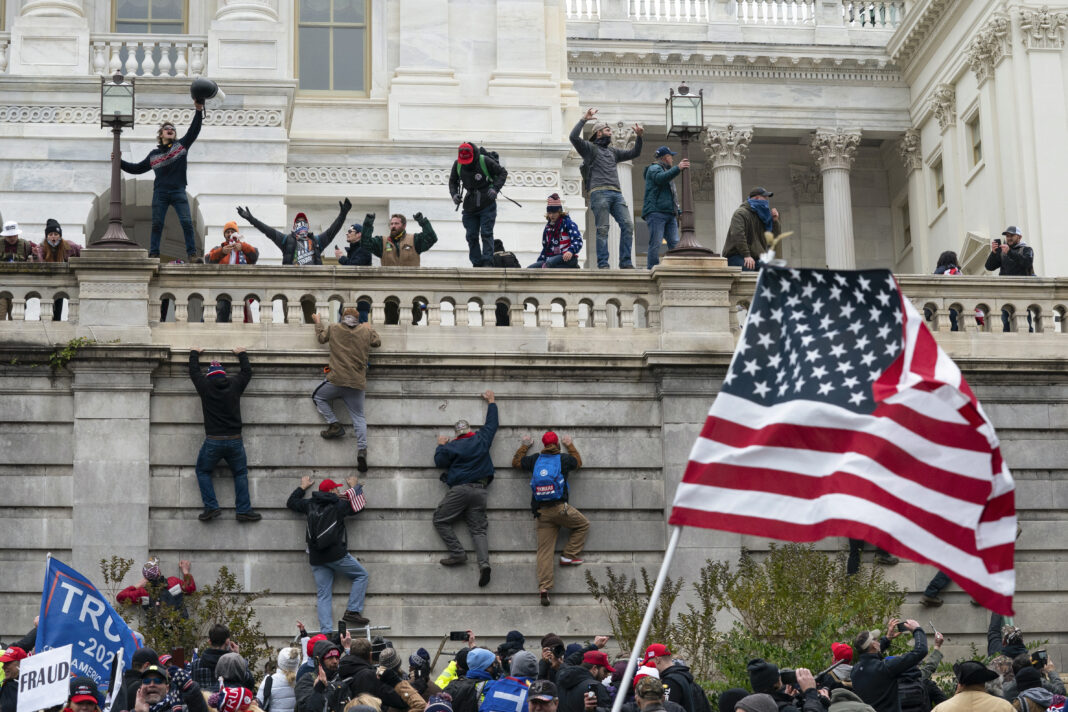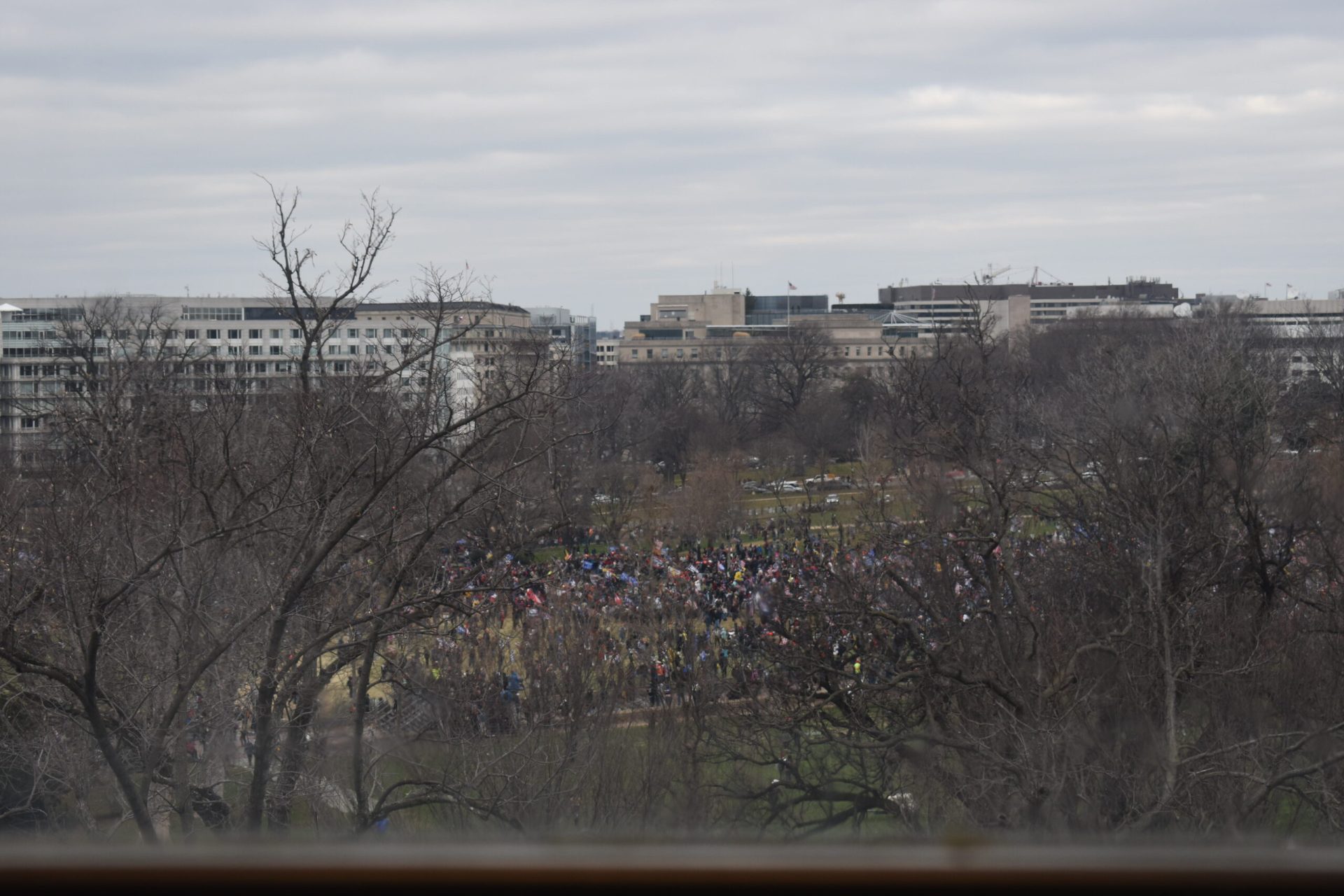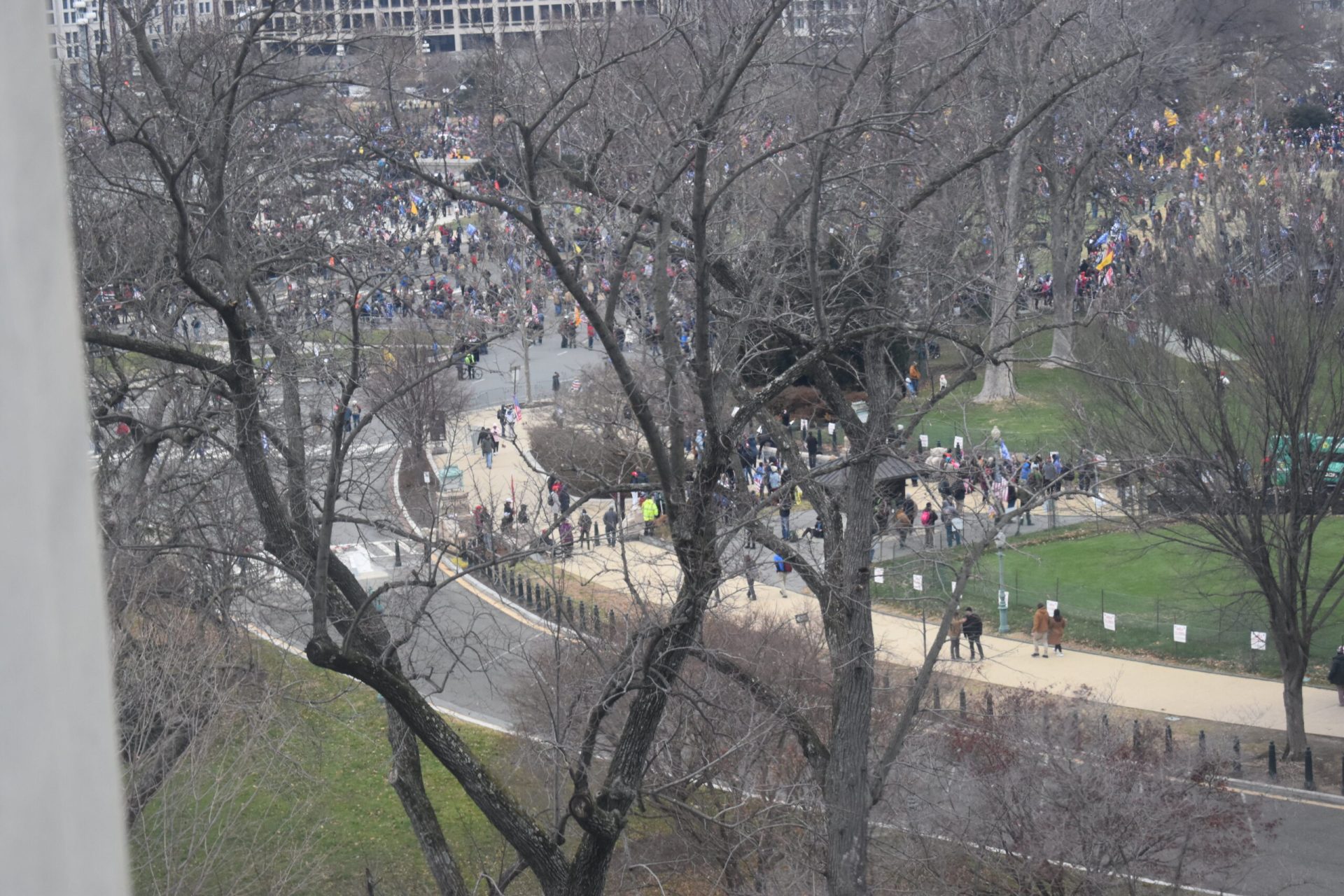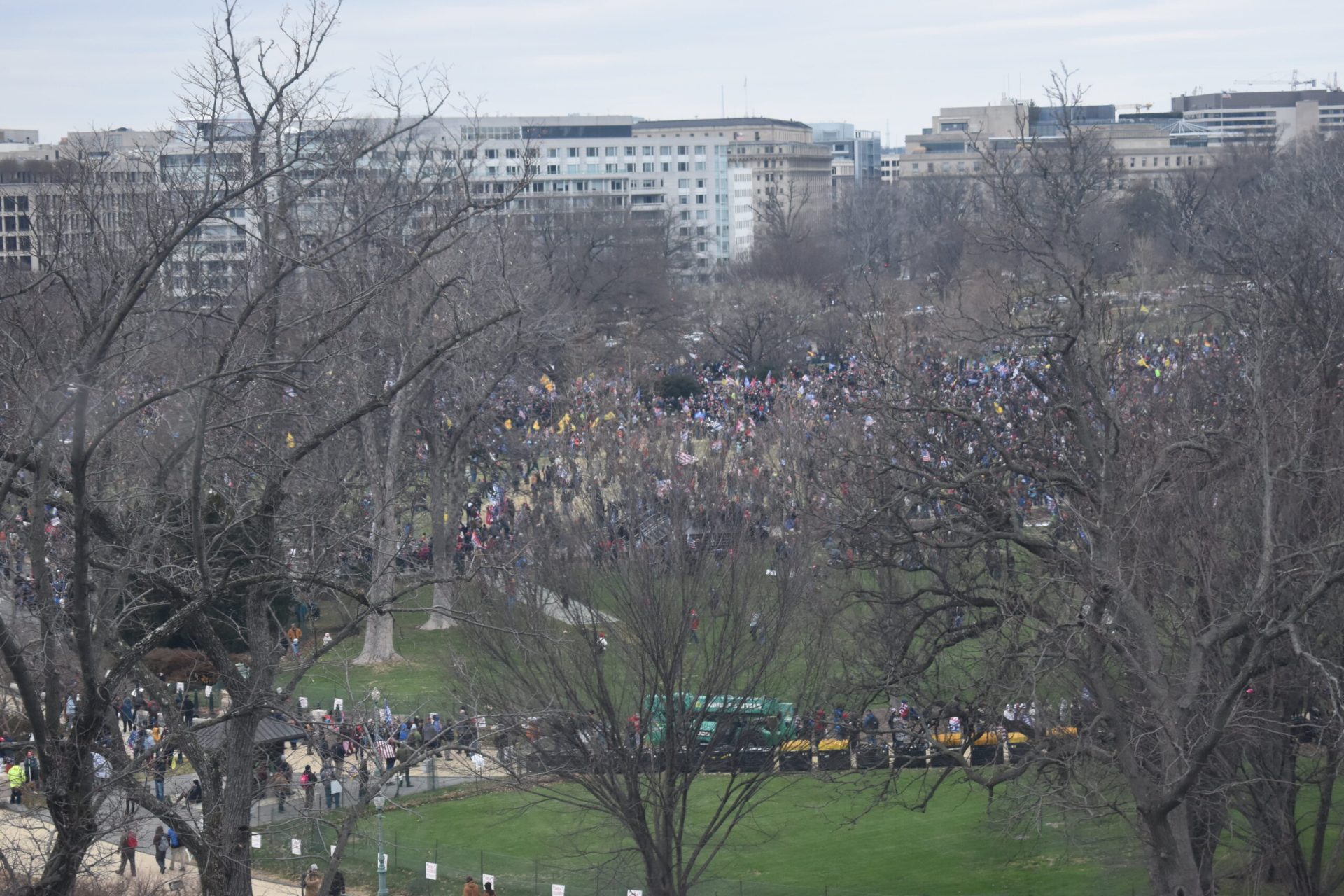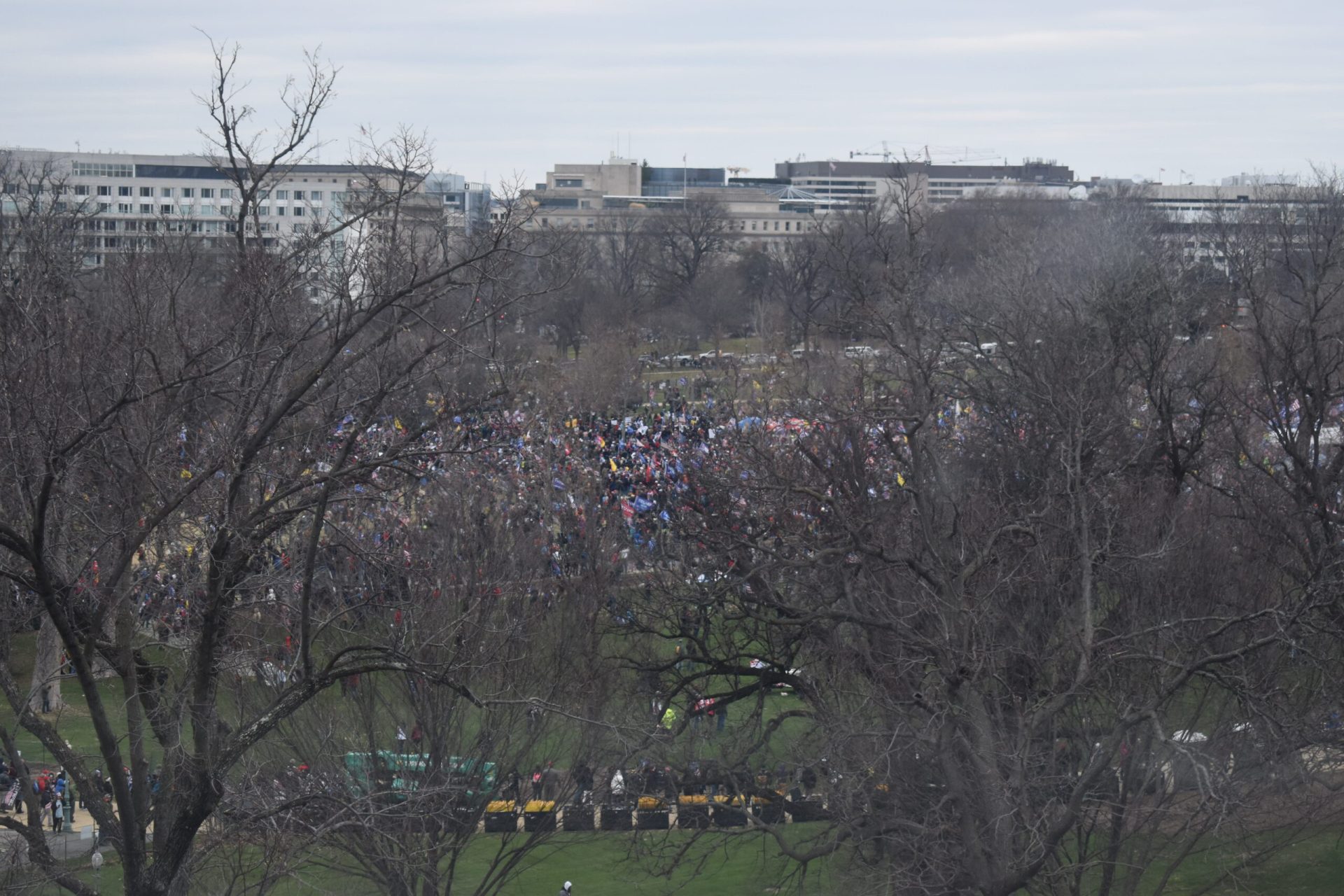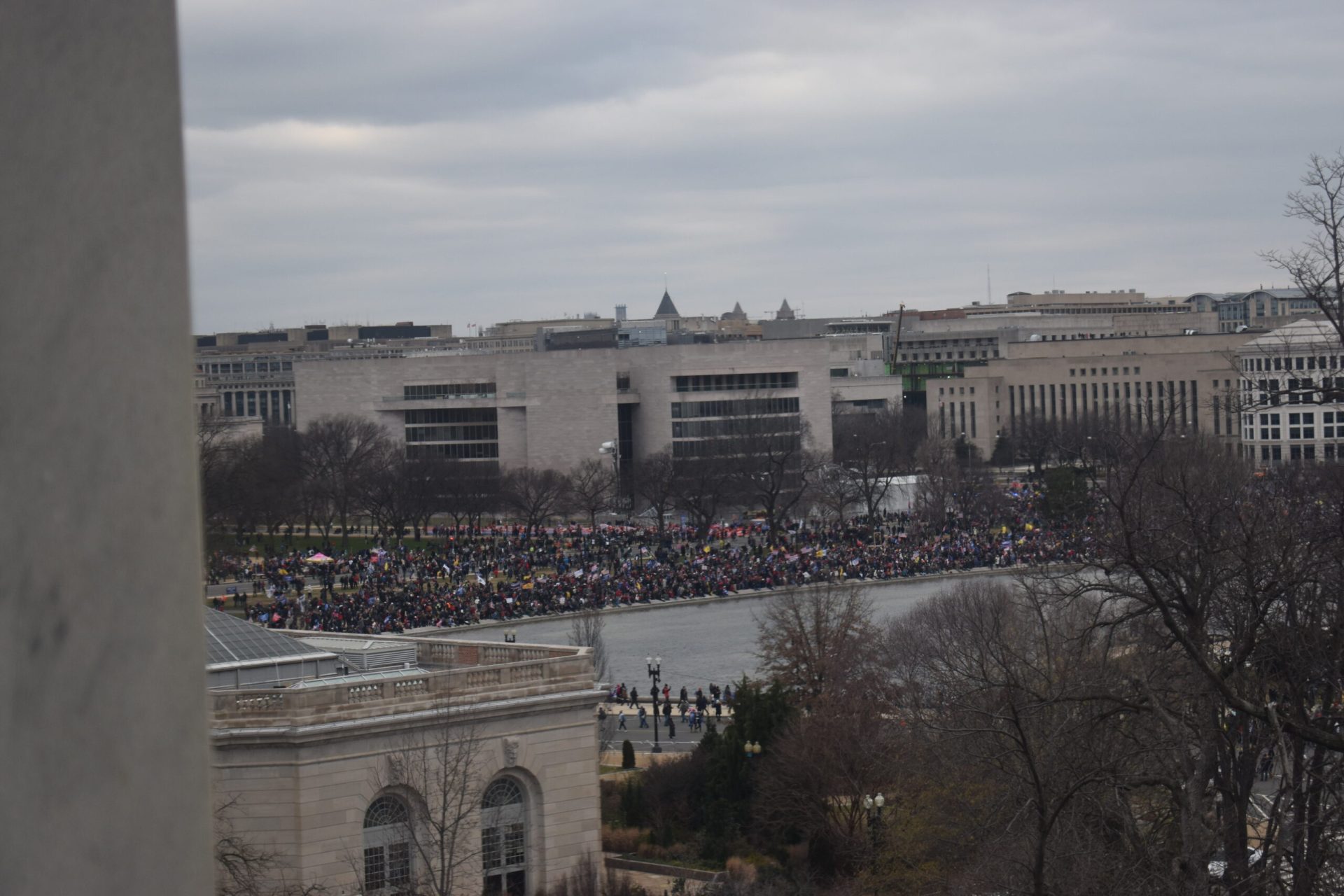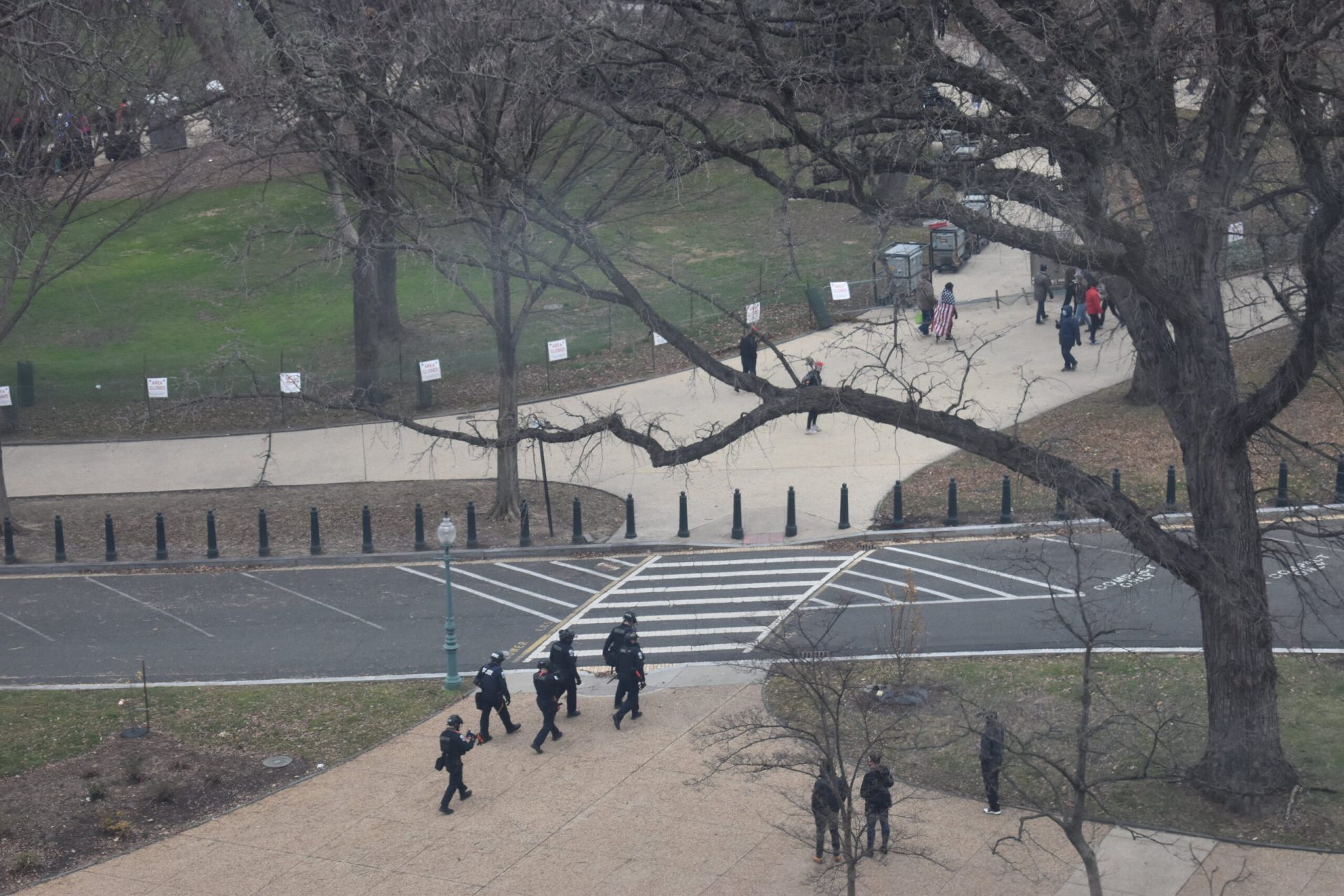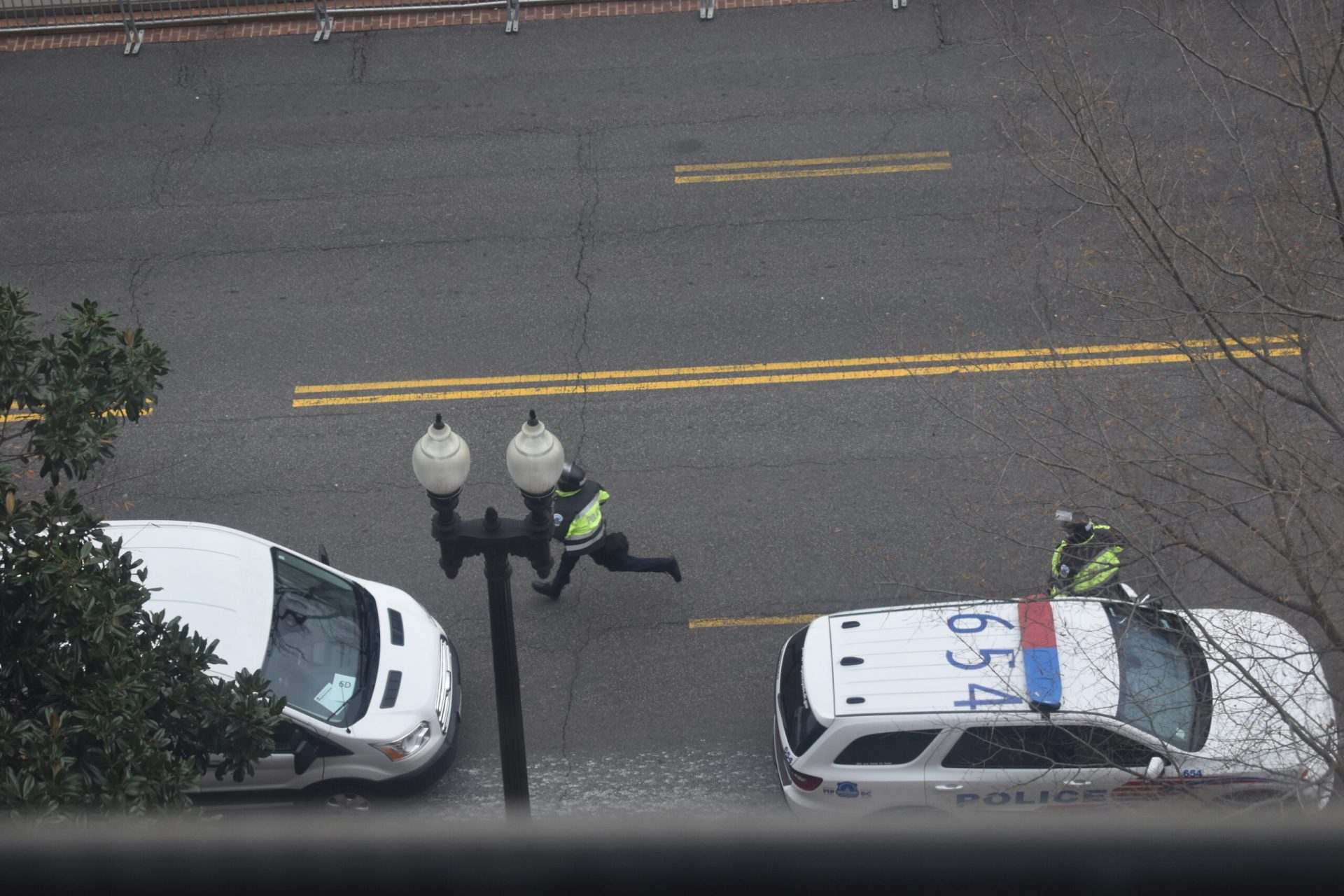
Jan. 6, 2021 was anything but a normal day from the get-go.
U.S. Rep. Vicente Gonzalez, D-McAllen, knew as soon as he arrived at the U.S. Capitol building to watch the certification of the Electoral College votes that something was amok. Greeting Gonzalez at the front of the Capitol building were droves of people who’d descended upon the home of the legislative branch in opposition of the certification.
“My driver dropped me off and sped off,” Gonzalez recalled. “I walked to the front door, and they wouldn’t let me in. They said that the Capitol had been shut down. It hadn’t been breached yet, but it had been shut down.”
In order to gain access to the building, Gonzalez would have to walk through the growing mass of protestors in order to reach the Cannon Tunnel, which is commonly used by members of Congress in order to get from the Cannon Building to the Capitol.
Gonzalez said the tension was overwhelming as he prepared to walk through the crowd of protestors. He recalled removing his U.S. flag pin and his tie as a precautionary measure before trekking through the crowd.
“Something was not right,” Gonzalez said. “It felt like we did not have enough security — and I’m not a security expert, but clearly the tensions were high. People were ranting and raving outside, and things seemed very, very tense. Even though there was security out there, it didn’t seem like it was enough for the droves of people that were out there. It felt tense enough that I didn’t want people asking me, ‘What district do you represent? Are you a Democrat or a Republican?’
“It was a bad deal.”
Fortunately, Gonzalez was able to make his way to the Cannon Tunnel unscathed and eventually into the House Chamber — seemingly out of harm’s way.
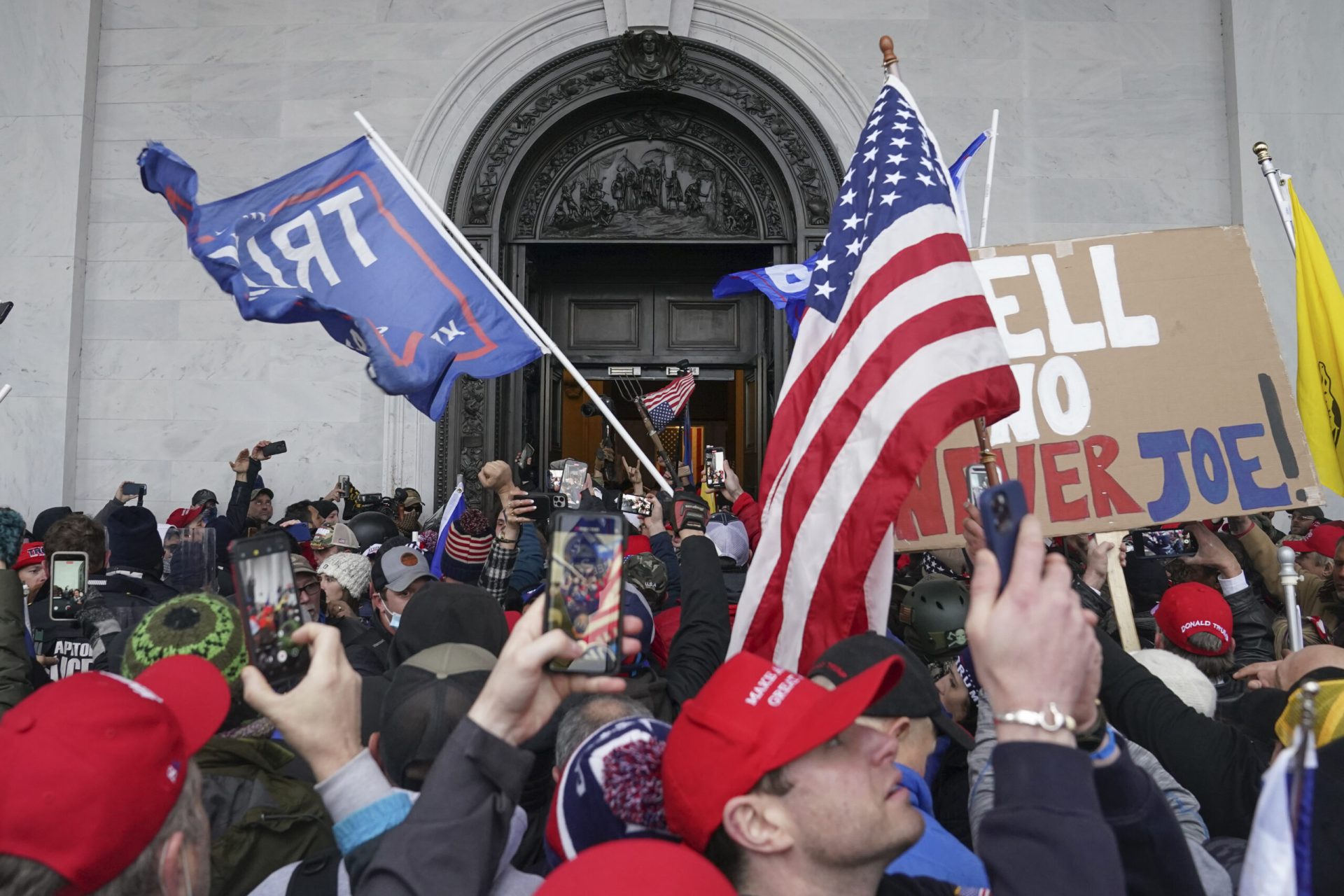
At the same time, U.S. Rep. Henry Cuellar, D-Laredo, was inside his office at the Rayburn House Office Building, located southwest of the U.S. Capitol, waiting for his chance to go into the House Chamber.
Cuellar watched a rally held by then-President Donald Trump on the television in his office. Occasionally, he would glance outside his window and see the crowd of protesters on the Capitol grounds, their numbers gradually growing by the minute.
“I looked at the crowd. I’d seen bigger crowds than this,” Cuellar recalled. “Then, of course, that crowd got very big. A lot of them were at the rally. Then the president says, ‘Go that way,’ and all of a sudden you see as you look out the window this stream of people coming toward the Capitol.”
Cuellar said he’d seen protests from supporters of both sides of the aisle in the past at the Capitol, but he’d never seen a crowd actually breach the barriers.
“As I looked out, from there you could see the bleachers where the presidential inauguration was going to be, and all of a sudden you started seeing flags — Trump flags, American flags, and things being hung there,” Cuellar said. “I said, ‘That’s different.’ People don’t touch things like that.”
Matters continued to intensify as the Laredo-based congressman witnessed the volatile atmosphere grow more dangerous by the minute.
“Then I looked at the Capitol — you could see the doors and the windows, and the perimeter was broken,” he continued. “That means that they had gone up to the actual Capitol building. As I kept looking out there, I saw this smoke come out in the crowd, and it was teargas. That’s when I said, ‘There’s something wrong here.’”
Journalists were there to cover the proceedings during a time when there was apprehension and uncertainty about whether members of Congress who were loyal to Trump would certify the votes and recognize Joe Biden’s election as president. Among those journalists was Daniella Diaz of CNN, who’s from McAllen and previously worked at The Monitor.
On Wednesday, the eve of the one-year anniversary of the Jan. 6, 2021 Capitol riot that spawned Trump’s second impeachment and criminal investigations, convictions and imprisonments of those who participated, Diaz took to social media to retrace her steps on that historic date.
Diaz said on Twitter she had planned to work overnight and, early in the day, noticed a large group of protestors from a window inside the Capitol, a group she later observed creeped closer and closer.
“They breached the Capitol moments after I took this photo,” Diaz tweeted, sharing a photo of the rioters. “I was then locked down with about a dozen reporters & staff on the 3rd floor of the House side of the Capitol for several hours.
“There was nothing to eat and I was starving. Then hours later police came and told us we only had 5 minutes to evacuate the Capitol.”
She later made her way to an undisclosed location until cleared to return to the Capitol.
Though a harrowing experience, she also spoke optimistically when tweeting a photo of the Capitol the morning of Jan. 7, saying: “Still beautiful despite the tragedy of that day.”
Jazmine Ulloa, a former reporter for The Brownsville Herald, was also at the Capitol Building covering the certification of electoral votes for the Boston Globe. She’d spent that morning interviewing supporters of the former president prior to the certification.
“The anger and the emotion in the crowd that morning was palpable,” Ulloa recalled. “I spoke to many voters who had come in at 6 in the morning, who had driven all night, who had ridden buses from all over the country, and they were really amped up about this lie that the election had been stolen. One woman even had tears in her eyes. She was from Georgia, and she was just distraught that two Democratic senators had won her state.”
Later in the afternoon, Ulloa was inside the Capitol reporting on the certification when she began to hear shouting from outside the building.
“The thing that I keep thinking about is the pounding on the door, the sound of the pounding on the doors of the Capitol as they were trying to break in,” Ulloa said. “I was inside the Capitol in a hallway. It has a balcony where you can look down and see the second floor. You could see the front doors of the Capitol.
“It was just a mass of people. It was just a dense crowd just piled up against the door.”
Gonzalez had been inside the House Chamber for roughly half an hour when he began to hear the screams coming from outside. It was at that time that security entered the chamber and rushed House Speaker Nancy Pelosi and Minority Leader Kevin McCarthy out of the Chamber. Everyone else was locked inside and told to remain in place.
“From there, everything just took off,” Gonzalez said. “We heard what we thought were gunshots, but later we found out they were shooting teargas at everybody.”
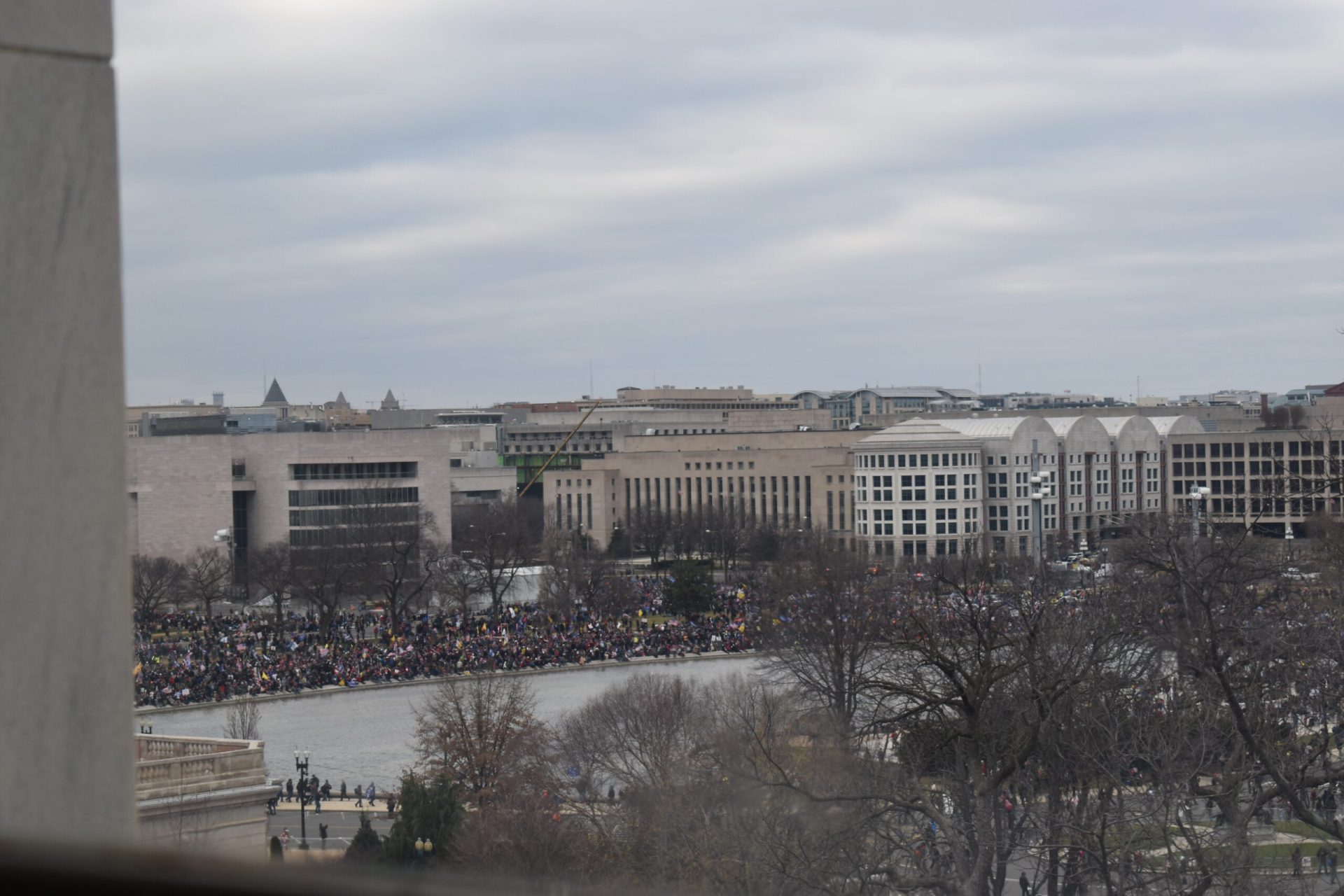
Gonzalez said he immediately knew he was in danger at that moment. He tried to find somewhere to hide on the upper level inside the Chamber.
“I went and found a ledge because I thought if they try to shoot us from here, I want to at least take some cover,” Gonzalez said. “I was unarmed, as most members were, and at the minimum I wanted to have some place to get behind in case they shot up at us.”
Soon Gonzalez and his colleagues were told to put on their gas masks and prepare for their evacuation.
Gonzalez said that the last thing he saw as he exited the Chamber was U.S. Capitol police with their guns drawn and pointed toward people in the central walkway who’d broken the glass on the entrance door. He recalled hearing one of the officers asking, “Is it worth it to end your life today?”
Moments later, Ashli Babbitt was shot and killed as she attempted to climb through the broken window of a barricaded door.
“I don’t think there was anybody in the Chamber that didn’t at least think that they might not make it home that night, at that moment,” Gonzalez said.
After hours in lockdown, Cuellar said that Capitol police finally allowed people to go home. He chose to remain and send his staffers home. It was at this time that he made a call to Speaker Pelosi and encouraged her to follow through with the vote.
“I don’t care how late it is, but if we don’t continue with this, then they win. They disrupted us, and we cannot let them win,” Cuellar said.
As the hours went by, Cuellar recalled setting numerous alarms on his phone at 30-minute increments to make sure he wouldn’t fall asleep and miss his chance to vote.
“It was a surreal situation being in the middle of everything,” Cuellar said. “It was surreal watching things that you just never thought would happen in the U.S. — that a mob would mob the U.S. Capitol, one of the most sacred places.”
For Gonzalez, the experience was both deeply unsettling and reassuring.
“The way I’d like to sum it up is it was the saddest day that I ever had in the United States Congress to date,” Gonzalez said. “But it was also the day that made me the proudest because even with that violence, even with our lives at risk with people threatening to kill us, we all showed up that morning at 3:30 to the Chamber and voted to certify the election and ensure that there was a peaceful transition of power.”

